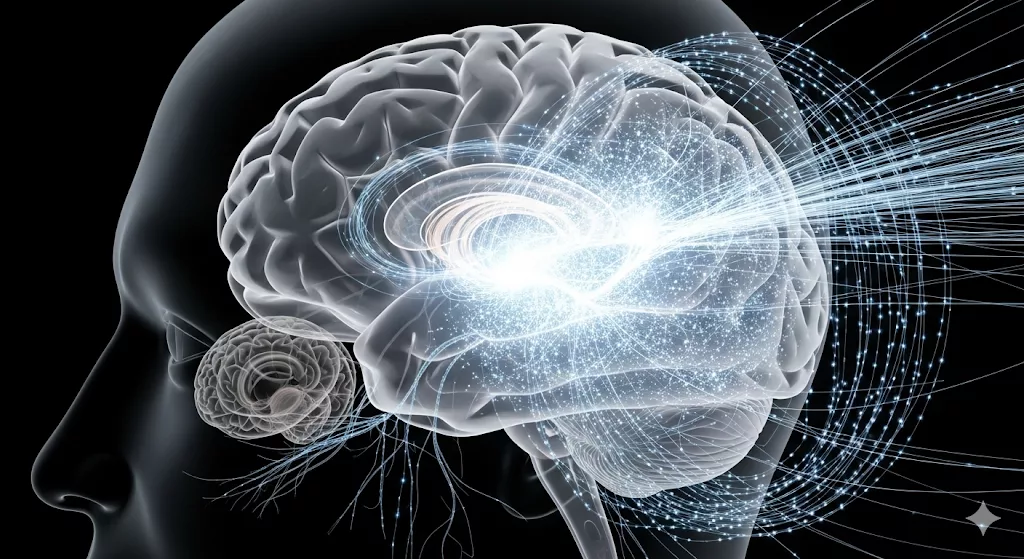The human visual system commands an extraordinary 50-55% of the cerebral cortex and contains approximately 8-9 billion neurons dedicated to processing visual information. This makes it the most resource-intensive sensory system in the body.
This massive neural investment translates to measurable metabolic dominance. Visual processing areas demonstrate highest regional blood flow and oxygen consumption rates. During visual stimulation, glucose uptake increases by 51%, while two-thirds of the brain’s electrical activity supports vision when eyes are open.
Recent groundbreaking research reveals the complexity behind this investment. The 2025 MICrONS project mapped 523 million neural connections in visual cortex alone, exposing advanced parallel processing architecture that justifies this massive biological investment.
Energy Consumption Reveals Metabolic Demands
Visual processing areas exhibit highest regional cerebral blood flow and oxygen consumption rates among all cortical regions. These rates dwarf other sensory systems.
During active vision, visual cortex increases glucose uptake by a remarkable 51% while oxygen consumption rises only 5%. This indicates a preferential shift toward rapid but less efficient glycolytic metabolism to meet immediate processing demands.
This metabolic signature distinguishes visual areas from other brain regions that maintain more balanced oxygen-glucose consumption ratios.
Visual Processing Dwarfs Other Senses
Comparative analysis reveals vision’s overwhelming dominance in brain resource allocation. Visual processing commands 30-66% of all cortical resources compared to merely 3% for auditory, 8-12% for somatosensation, and less than 2% each for taste and smell.
This 10-20 fold difference between vision and hearing represents the most extreme resource allocation disparity in the brain. When eyes open, two-thirds of total brain electrical activity shifts to support visual processing.
This dominance stems from fundamental differences in information processing demands. The retina contains 126 million photoreceptors feeding into 1.5 million optic nerve fibers, creating a massive data stream requiring extensive cortical machinery.
By comparison, the auditory system processes information from approximately 15,000 hair cells per ear, while taste relies on roughly 10,000 taste buds.
Visual information is uniquely complex, encompassing spatial resolution, temporal dynamics, color, motion, depth, form, and texture—all processed simultaneously. This multidimensional nature necessitates vastly more computational resources than the relatively simpler signal processing required for other senses.
Conclusion
The human visual system proves remarkably susceptible to manipulation when subjected to carefully engineered Virtual Reality environments. By exploiting the brain’s tendency to fill in gaps, misinterpret depth cues, and make inaccurate assumptions about reality, VR developers craft experiences that reliably induce visual hallucinations.
These visually striking experiences use everything from persistence of vision to binocular rivalry, essentially turning our perceptual machinery against us in service of entertainment. Humans willingly pay money to be systematically deceived by their own sensory apparatus.
Scientific Research
- NIH: Visual System – Neuroscience textbook chapter on visual processing
- Nature Neuroscience – Peer-reviewed research journal on brain function
- MIT Brain and Cognitive Sciences – Vision research at MIT
